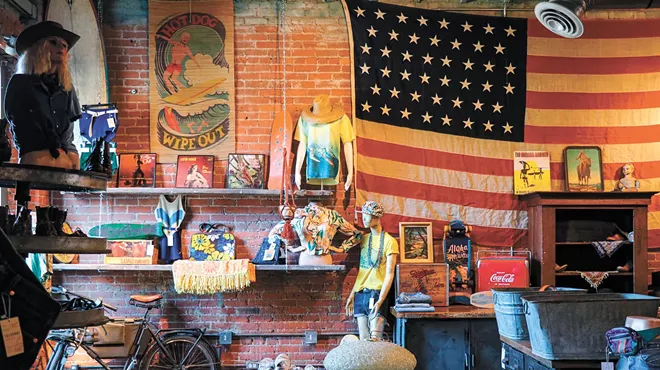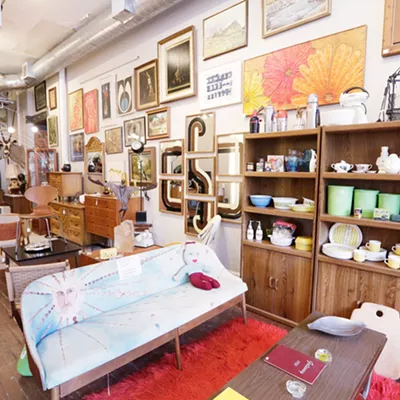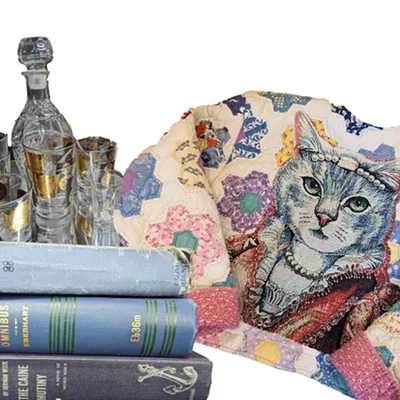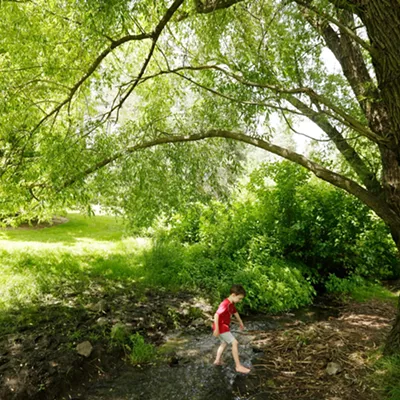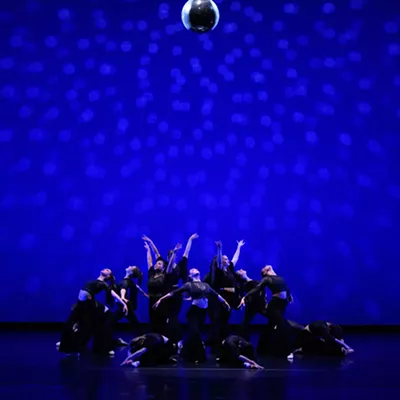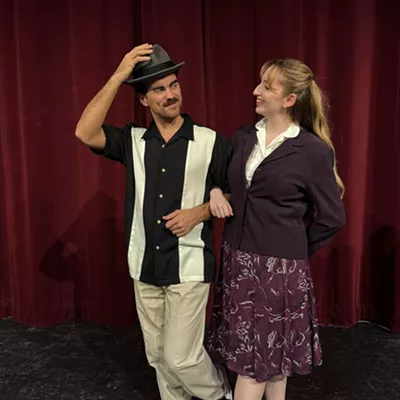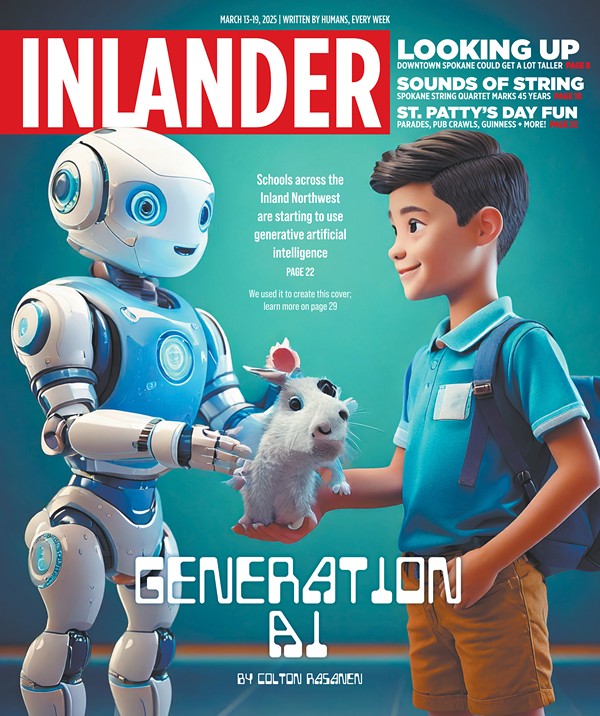There is a box in Tamra Brannon's studio at Outlaw Woman that is full of about 20,000 charms that she has picked up from many places. These charms are meant for people to sort through and find ones that resonate with them to inspire a "story necklace."
"The signature thing of my pieces is that they tell a story and I try to tell people the story of why I made the piece that I made," Brannon said.
Outlaw Woman is a Garland District studio in which Brannon and team make jewelry, bags and other goods from found and donated materials. One of the reasons she works with found or vintage materials is because of the stories they tell.
"One gal had a little rose, a hat, this state of Oklahoma, and a wing," Brannon says. "I asked what that meant to her and she said, 'My grandmother and I used to have tea parties every Sunday in her rose garden, and we would wear fancy hats, and I miss her so much.' It's just really cool, stuff like that. It's neat that people can find little pieces that wouldn't make sense to anyone else except the person wearing the necklace. It's so cool to make these pieces for the beautiful souls who walk through my store."
The old adage "one man's trash is another man's treasure" is not often thought about in regard to fashion. But between a surge in popularity of secondhand fashion and the COVID-caused reinvigoration of DIY crafting, the cultural fascination with thrifted and vintage items has never been stronger.
For those who want to learn how to make jewelry or goods with leather, Outlaw Woman has many resources, including classes where she teaches every technique she knows.
"People are really surprised how easy some leatherworking is and even some entry-level metal stamping," Brannon says. "It's neat to see how people can come in and take a word that speaks to them and be able to personalize metal and make a custom piece for themselves. Even if it doesn't turn out as what society deems as perfect, everything is a little janky and rickety, and that's what makes them unique and awesome."
While the artistic aspect of self-expression is an important part of buying thrifted and vintage clothes, it isn't the only reason to shop at local vintage stores. Secondhand clothes might be trendy, but they always have been the more sustainable option, which is what Fay Ripley, owner of Red Leaf Vintage, tries to instill in her customers.
"I've been really trying to slowly educate people. I don't want to be in your face, but I'm just like 'Hey, it takes a lot of resources to make clothing,'" Ripley says. "It's really ugly, the garment industry, and how fast-fashion is made. ... We don't see what happens in other countries with how they make our clothing, so therefore I think we just kind of buy our clothing, and we don't have to think about it."
Accessibility has a lot to do with the problem. With new clothes at a very cheap price becoming more and more accessible, many would opt to buy new rather than fix their old.
"Back in the day, like in the '50s or '60s, if you had a hole or a rip it was mended, and you wore it again," Ripley says. "Now we don't really do that anymore, we throw it away and buy new because it is just so easy. With my vintage clothing, I have a seamstress, and she is always sewing and mending and just trying to keep the pieces going."
It may seem counterintuitive to what all the thrifting Instagram accounts are saying, but buying thrifted and vintage clothes is new to many consumers who rely heavily on fast fashion.
"I feel like vintage clothing or thrifted clothing has become more acceptable in the last couple years," Ripley says. "There were many many years where if you wore thrifted clothing or vintage clothing people would be like 'eww, that's gross.' Now it's cool to wear thrifted and vintage clothing, and that also comes from many other things like celebrities wearing vintage clothing, or there's movies and TV shows that are era pieces."
While Ripley is passionate about sustainability, she emphasizes the fact that your wardrobe doesn't have to be exclusively vintage. Even if you thrift something from last year, you are still giving the material extra life, she says.
"I do like vintage mixing," Ripley says. "I always encourage people that you don't have to do full vintage, which can be difficult. There are people who wear let's say '40s and '50s clothing, and they are usually full head-to-toe vintage. But you can still wear your new clothing but still put in vintage and thrifted pieces."
When starting your journey at thrift stores, there are potential pitfalls.
"The one thing I think people get confused about is that sometimes with vintage clothing they have sizes on them and that's just not," Ripley says. "If you look at certain sizes on certain clothing, that's not really the true size."
Selecting the right piece is important. However, a second step that has become widely popular is the DIY aspect of it. From painting to embroidering, many have been adding small creative accents to their clothes.
Hut No. 8 in Spokane Valley is a great place to learn about these skills. According to Hut No. 8 manager Justina Dokken, the staff has been learning various techniques online to teach customers during a DIY class the store recently debuted.
"We based it off the ideas of a lot of paint and drink classes where people can get together and have fun times with their friends," Dokken says. "We are all about sustainability. [At a recent class] we were able to give them three pairs of jeans to paint, embroider and distress. The next class we are doing is a T-shirt embroidering class. We are going to walk through different stitches, and if they want to crop them, we are going to have materials for that as well."
Buying clothes secondhand is a great way to express individuality and unleash your artistic side. According to both Brannon and Ripley, there are some amazing places in Spokane to check out and start shopping sustainably and locally.
"It's just amazing, the tears from people who say they aren't creative and never realized they do have a story, and there is a journey and a path they are walking," Brannon says. "When people ask me what I do, I say 'I have a jewelry and a leather goods company, and tell people's stories.' They give me the strangest looks, but it's what I do. One scrap of metal at a time." ♦



